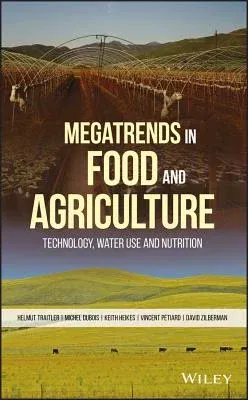Highlights and examines the growing convergence between the food and
agricultural industries--the technological, environmental, and
consumer-related drivers of this change, and the potential outcomes
This is the first book of its kind to connect food and the food industry
with agriculture, water resources, and water management in a detailed
and thorough way. It brings together a small community of expert authors
to address the future of the food industry, agriculture (both for plants
and animals), and water--and its role in a world of increasing demands
on resources.
The book begins by highlighting the role of agriculture in today's food
industry from a historical perspective--showing how it has grown over
the years. It goes on to examine water management; new ways of plant
breeding not only based on genetic modification pathways; and the
attention between major crops (soy, corn, wheat) and so-called "orphan
crops" (coffee, cocoa, tropical fruits). The book then turns towards the
future of the food industry and analyzes major food trends, the new
food, and "enough" food; discusses possible new business models for the
future food industry; and analyzes the impact that the "internet of
everything" will have on agriculture and the food industry. Finally,
Megatrends in Food and Agriculture: Technology, Water Use and
Nutrition offers scenarios about how agriculture, food, and the food
industry might undergo some radical transformations.
- Assesses the evolution of food production and how we arrived at
today's landscape
- Focuses on key areas of change, driven by both innovation and
challenges such as new technologies, the demand for better nutrition,
and the management of dwindling resources
- Highlights the role of better-informed consumers who demand
transparency and accountability from producers
- Is written by industry insiders and academic experts
Megatrends in Food and Agriculture: Technology, Water Use and
Nutrition is an important resource for food and agriculture industry
professionals, including scientists and technicians as well as decision
makers, in management, marketing, sales, and regulatory areas, as well
as related NGOs.

